| Corbin SIM-TESTtm ballistic test media is a stable, animal-protein based "simulated tissue" for consistent bullet performance tests. The material is a very close match to muscle tissue in density and consistency. The density is 1.3 gm/cc. (Density can be adjusted by controlling water content.) The major advantages over ballistic gel is stability at room temperature, and nearly unlimited re-use (melt and re-cast), which makes it a long term investment instead of a one-use throw-away. |
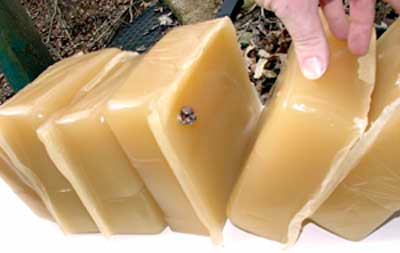
by Col.K.C.Duran Bullet testing is more of an art than a science, even though it may be done in a lab under controlled conditions. The reason is that the actual field conditions are virtually impossible to duplicate in the lab, because they seldom repeat themselves twice in the field! How can you duplicate constantly changing conditions? In the forensic field, for example, a bullet may impact a person through a heavy coat or on bare skin. It may strike a bone straight on, or it may glance along a bone and follow a long path under the skin, emerging somewhere else on the body that would hardly be expected. It may miss every bone in the body and impact nothing but muscle tissue, or it may even miss most of the muscle and puncture the space between organs, without striking anything you'd have to spell on a high school biology test. The problem with bullet testing is that we don't always know exactly what we are testing against, or for. In forensics, the idea may be to just recover the bullet with as little damage as possible, so it can be compared to a bullet used in a crime. That is not really "testing" in the sense of finding out what a bullet can do, so much as "testing" the appearance of one bullet against another, to try and discover whether both were fired from the same gun, or perhaps to get some idea of the kind of gun that was used to fire it. But a custom bullet maker who is testing a bullet isn't trying to solve a crime. Instead, the idea is to try and see how well the bullet performs in comparison with the performance of other bullets that customers could purchase. And that is where the problem starts: what exactly do we consider "better" performance? The performance we would like to see depends on the purpose for which the bullet will be used. Some bullets will be used for personal defense, some for hunting, and some for target shooting, to name the "big three" out of many possible uses. Target shooting is one of the easy things to evaluate: you want the most accurate bullet for the kind of gun and load, at the intended range to the target, for most of the people who will be using the bullet. In some cases, the most accurate bullet for one load and gun is not even close to accurate enough for another gun and load. The Ultra Low Drag or the Very Low Drag designs, which generally feature a long secant ogive and a rebated boattail (ULD) or a standard boattail (VLD), may be terribly unstable in a normal 10 or 12 inch per turn "factory" standard barrel, although they may be the most flat shooting and therefore most likely to stay on the 10-ring at 1000 yards when fired from a fast-twist barrel with a fairly high initial velocity. Likewise, the bullet designed to penetrate half-way through a deer-sized animal and expand to twice its diameter almost every time, without losing its core (by using Core Bond, for example, or by using a double-jacket design where one jacket protects the core inside the airframe of the other jacket) may just poke a hole all the way through a fox or coyote without expanding until it hits the dirt on the other side. And it may blow to bits within milliseconds of striking the tough skull and horns of a Cape Buffalo. So, what is "better"? If your bullet expands to a classic mushroom shape at 3,200 fps impact velocity, is that good or not? If it penetrates twice as far as a factory bullet, is that better or worse? The answer is, there isn't enough data to tell! In the first instance, we have not compared the bullet to any alternative bullet. Maybe the alternative, in the same circumstances, blows to bits. Then the test sample is better, assuming you didn't want a fragmenting bullet for some reason. Maybe the alternative bullet would expand even larger at the same speed, or reach that size and stay there at 2,900 fps instead of 3,200 fps. In that case, maybe the test bullet isn't quite as "good". But we really don't know enough yet. It's almost as if we said, "This vehicle gets 20 miles to a gallon. Is that good?" Could be, if it is a heavy truck or a big police cruiser. Maybe not, if it is a light-weight two-seater. Besides, there is a lot more to compare than just gas mileage before we make any over-all value judgement. In the second case, we have not determined whether penetration is desired or not in the ultimate target. And we have not said anything in either case about how the test medium compares to the expected target. Before a meaningful test can be made of a bullet for anything except accuracy, the test medium needs to be "calibrated" against the expected target. You can blow almost any bullet to bits by shooting it fast enough into a dense enough material. Try firing your bullet into a flat plate of armor and see what happens as you increase the velocity of each shot. At some point, the bullet disintegrates (if the armor is tough enough). By the same token, if you shoot a "good" hunting bullet into a low density medium at increasingly lower speeds, eventually you reach a point where the bullet looks about like it did before you loaded it except for the rifling marks. In truth, the only real test of a bullet is to fire a statistically meaningful number of them in "real life" situations at the real intended targets, and tabulate the results. The velocity should be varied over the "normal" range for various impact situations that could reasonably be encountered (no, we don't have to consider firing while under water, etc., unless that is really a common usage). But even there, because of the random variables in "real life" shooting and hunting, you simply cannot judge a bullet entirely on one, two, or maybe even two dozen shots (although if all of them result in successful performance, then it does point in the right direction, and if all or nearly all shots are failures, it doesn't bode well for further tests). Some bullet testers have gone so far as to construct a sort of "android" animal out of a side of beef and some bones and maybe even an old hide stretched over it, to see if their bullet would look like the ones in magazine ads after poking a few holes in this odd target. But the problem there is that none of the non-living materials has blood vessels or body cavities filled with fluid, or has the same density or complexity of structure of the actual game. And really, all of this is beside the point. You really can't simulate field conditions, both because they vary so much for each shot, and because any one of them would require a live animal, something that is not only politically incorrect but very expensive! Fortunately, it isn't necessary. There is a better way to get meaningful results. That is to use any moderately similar material to animal tissue, preferably muscle because (a) most shots are likely to impact muscle for a significant part of their travel and (b) the density of muscle tissue is such that it wouldn't take the entire length of the range filled with it to stop your bullet so you can examine it! Water is a fairly good medium for stopping a bullet and simulating impact with a human being, even though handgun bullets travelling at the usual and conventional handgun velocities typically do very little expanding in water. They also perform the same in people, unless the bullet strikes bone. So the medium is a fair representation of what may happen to the bullet. Animal tissue is often leaner, tougher, and more resistant to the passage of a bullet than water or human tissue (mostly because people are not usually as thick as a game animal, or as muscular). To simulate bullet performance in game animals, something with a little more density would be nice. And in addition, it would be good to be able to stack the material up so it could be shot from the side, instead of firing down into a tank and getting drenched from the spray-back! |
Start writing here...
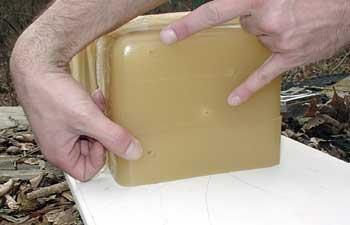
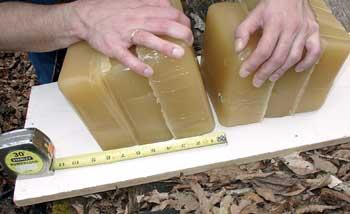
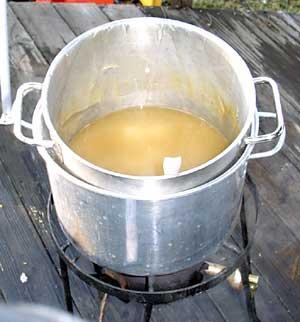
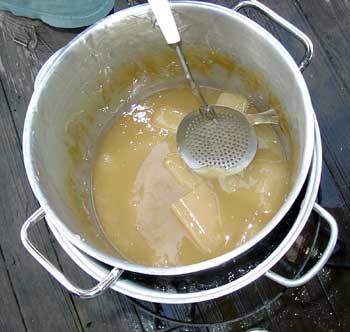
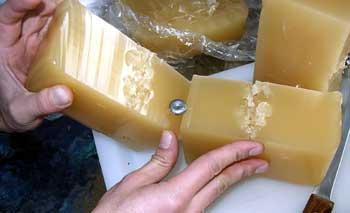
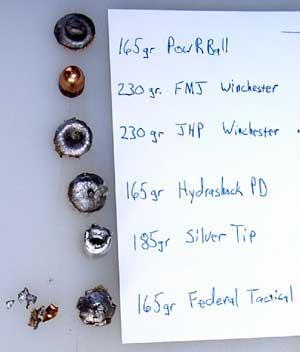
About Corbin SIM-TEST Ballistic Media